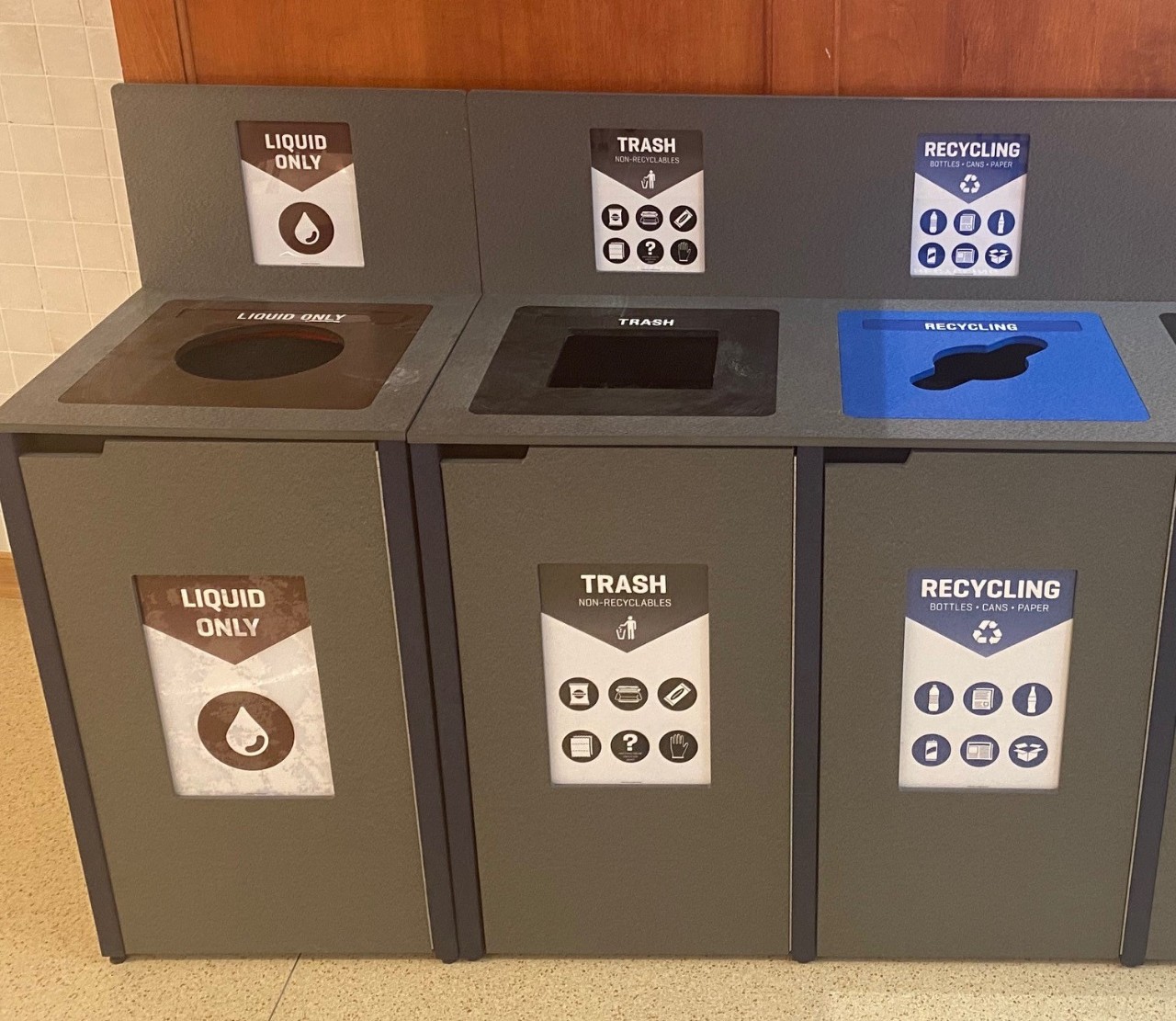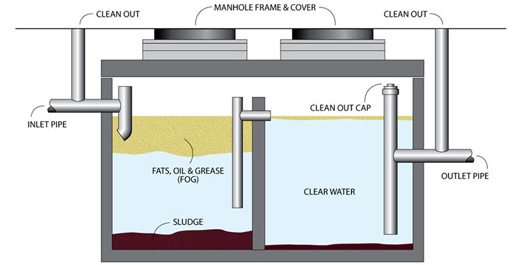Leading Industrial Wastewater Treatment Solutions: Making Sure Conformity and Performance
Leading Industrial Wastewater Treatment Solutions: Making Sure Conformity and Performance
Blog Article
Just How Fluid Waste Disposal Works: A Detailed Summary of Methods and Technologies Employed

Summary of Fluid Waste Types
The complexity of liquid waste kinds demands an extensive understanding of their attributes and ramifications for disposal. Liquid waste can broadly be categorized right into numerous kinds, including industrial, community, agricultural, and contaminated materials. Each classification shows unique residential or commercial properties, requiring certain administration methods to reduce environmental and health dangers.
Industrial liquid waste originates from making procedures and commonly contains a range of impurities, such as heavy metals, solvents, and organic compounds. Municipal fluid waste, mainly comprising wastewater from houses and commercial facilities, consists of raw material, nutrients, and microorganisms (industrial wastewater treatment). Agricultural liquid waste, consisting of drainage from farms, may consist of plant foods, pesticides, and animal waste, positioning threats to water high quality and communities
Hazardous fluid waste is characterized by its toxicity, sensitivity, or potential to trigger damage. This classification includes compounds like acids, bases, and specific chemicals that necessitate rigorous handling and disposal procedures. Understanding these diverse fluid waste kinds is vital for establishing reliable disposal methods and making certain conformity with environmental policies. Correct classification and characterization are crucial for executing suitable therapy techniques and lessening the adverse effects on public health and the setting.
Physical Treatment Methods

Testing is the first action, where bigger bits and debris are eliminated from the fluid waste utilizing screens or grates. This process safeguards downstream equipment from damages and makes sure smoother procedure. Adhering to testing, sedimentation uses gravitational force to different solids from liquids. In sedimentation storage tanks, much heavier fragments resolve near the bottom, developing a sludge layer, while the made clear fluid can be further treated.
Filtering is another essential method that entails passing the liquid via porous products, such as sand or membranes, to capture smaller sized particles. This action improves the quality of the liquid, making it ideal for subsequent therapy processes.

Chemical Therapy Techniques
Chemical therapy techniques are important for effectively taking care of liquid waste, specifically in dealing with liquified and colloidal contaminants that physical techniques may not appropriately remove. These strategies utilize different chemical representatives to reduce the effects of, speed up, or transform harmful materials into much less harmful types.
One usual method is coagulation and flocculation, where chemicals such as alum or ferric chloride are contributed to advertise the aggregation of suspended fragments. This process boosts sedimentation, enabling much easier elimination of the resulting sludge. In addition, oxidation processes, employing representatives like chlorine or ozone, are used to damage down complicated natural compounds and virus, providing the waste more secure for discharge or further treatment.
Neutralization is another important strategy, which adjusts the pH of acidic or alkaline waste streams to neutral levels, stopping prospective damage to downstream systems and the environment. Furthermore, advanced oxidation procedures (AOPs) utilize combinations of oxidants and ultraviolet light to break down persistent pollutants, achieving a higher degree of you could try here therapy performance.
Biological Therapy Processes
Organic therapy procedures play an important duty in the management of liquid waste by utilizing microbes to disintegrate raw material and lower contaminant degrees. These processes can be extensively categorized into cardio and anaerobic treatments, each utilizing specific microbial areas to achieve efficient waste deterioration.
Cardio therapy includes the use of oxygen to facilitate the malfunction of article source organic materials by germs. This procedure is generally carried out in activated sludge systems, where oygenation storage tanks offer a favorable atmosphere for microbial growth, bring about the oxidation of organic toxins. The resultant biomass can be separated from treated effluent via sedimentation.
In comparison, anaerobic therapy occurs in the lack of oxygen, depending on various germs to damage down raw material. This approach is specifically advantageous for high-strength waste, as it creates biogas, a renewable resource resource, while decreasing sludge production. Technologies such as anaerobic digesters are often employed in industrial and municipal applications.
Both anaerobic and aerobic organic therapies not just lessen the environmental effect of liquid waste however likewise promote source healing, making them crucial elements of sustainable waste management techniques. Their effectiveness, effectiveness, and versatility sustain their extensive execution across numerous sectors.
Arising Technologies in Disposal
Cutting-edge methods to liquid garbage disposal are swiftly developing, driven by innovations in technology and a raising focus on sustainability. Amongst these emerging modern technologies, membrane bioreactors (MBRs) have gained grip for their ability to integrate biological therapy with membrane layer filtration, leading to top quality effluent that can be recycled in numerous applications. MBRs make it possible for smaller sized impacts and much more effective operations contrasted to standard systems.
One more appealing advancement is using anaerobic food digestion Go Here incorporated with nutrient healing modern technologies, which not just treats liquid waste yet additionally creates biogas and recoups beneficial nutrients like nitrogen and phosphorus. This dual advantage improves source performance and lowers environmental impact.
In addition, advanced oxidation procedures (AOPs) are being adopted for the degradation of complex organic contaminants. These techniques use effective oxidants and drivers to damage down contaminants at the molecular degree, supplying a very efficient service for challenging waste streams.
Furthermore, the integration of fabricated intelligence and artificial intelligence in waste administration systems is enhancing operational performance and anticipating upkeep, leading to lowered prices and improved ecological compliance. These technologies mirror a significant shift in the direction of more lasting and efficient liquid garbage disposal methods.
Verdict
To conclude, efficient liquid waste disposal requires an extensive understanding of different strategies and innovations. The assimilation of physical, chemical, and organic therapy methods guarantees the reliable management of diverse waste types. Furthermore, the appearance of ingenious innovations boosts therapy effectiveness and advertises sustainability in waste monitoring methods. By continually progressing these methods, it becomes feasible to deal with the growing difficulties connected with liquid waste, eventually adding to environmental management and source recuperation.
Fluid waste disposal is a crucial aspect of ecological management, needing a detailed understanding of different techniques and modern technologies tailored to various waste kinds. Fluid waste can generally be categorized into a number of kinds, including commercial, local, agricultural, and hazardous waste. Agricultural liquid waste, including overflow from ranches, may consist of fertilizers, chemicals, and pet waste, posturing risks to water quality and communities.
Different physical therapy methods play a vital role in taking care of liquid waste effectively - industrial wastewater treatment.In verdict, effective fluid waste disposal demands an extensive understanding of different methods and modern technologies
Report this page